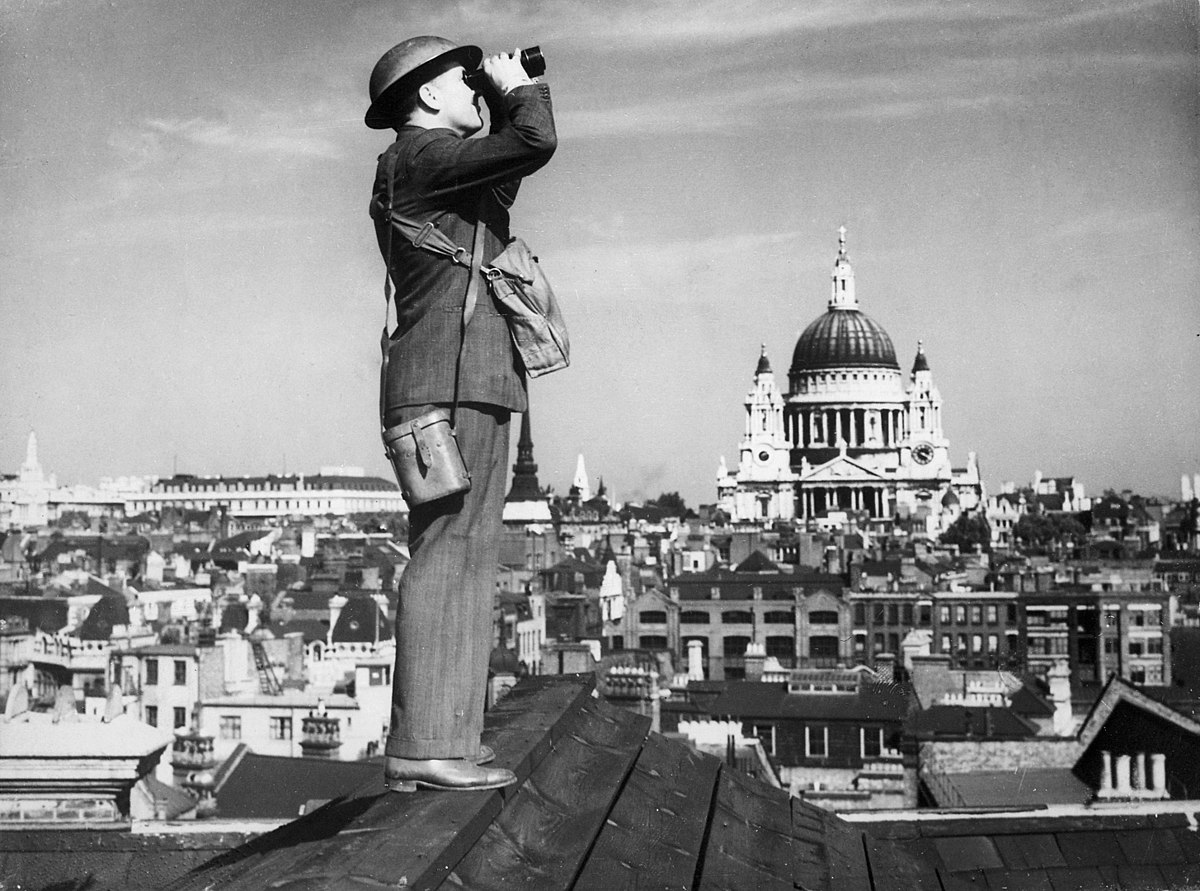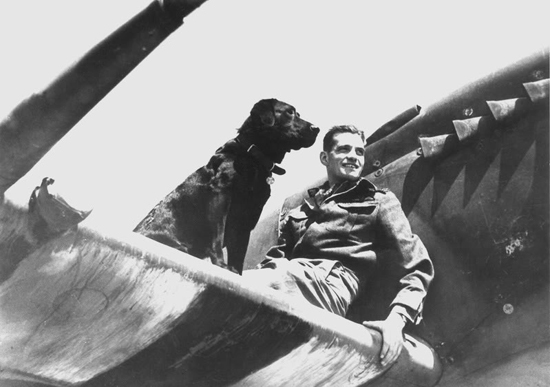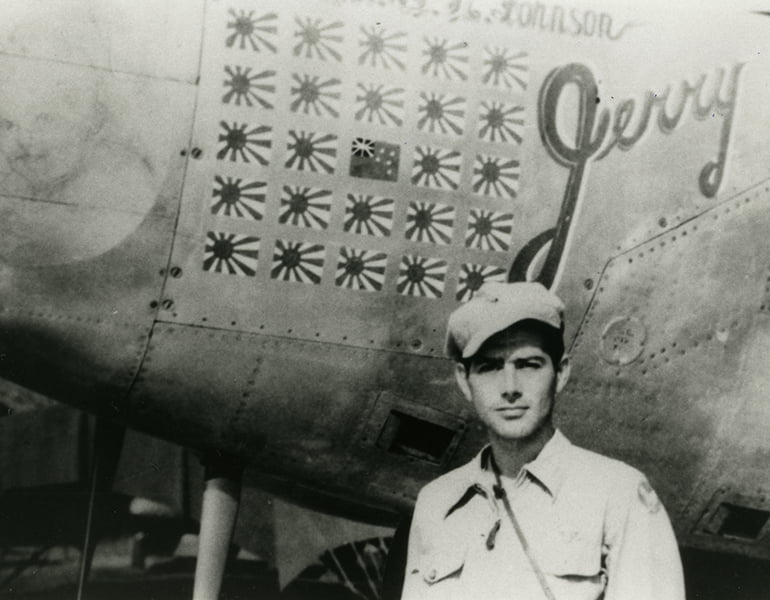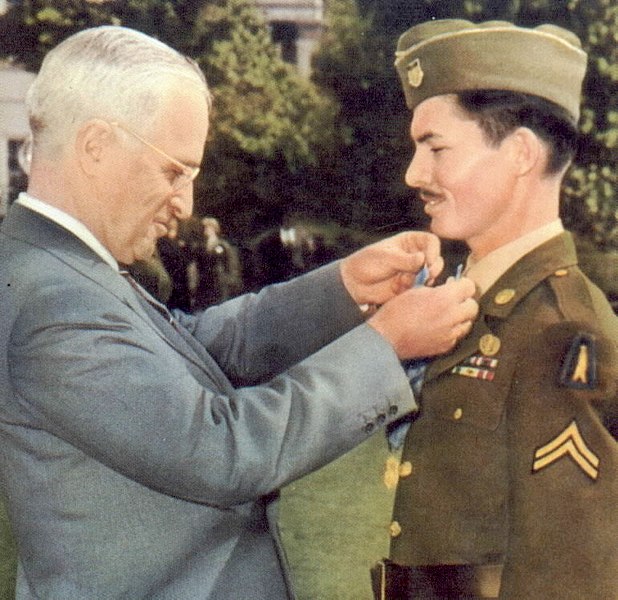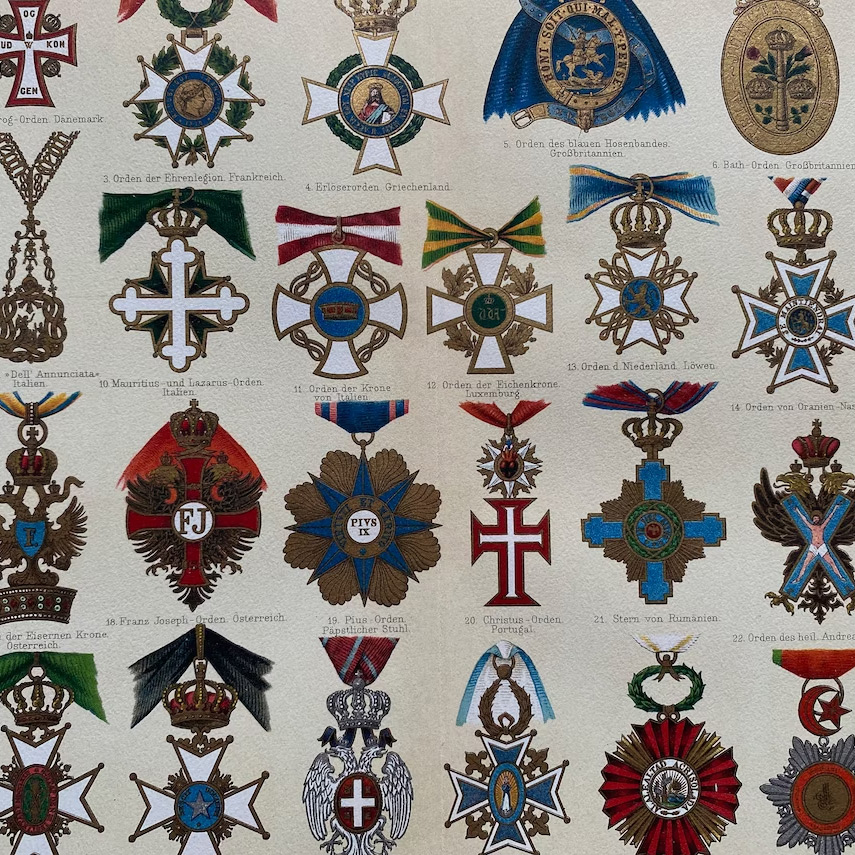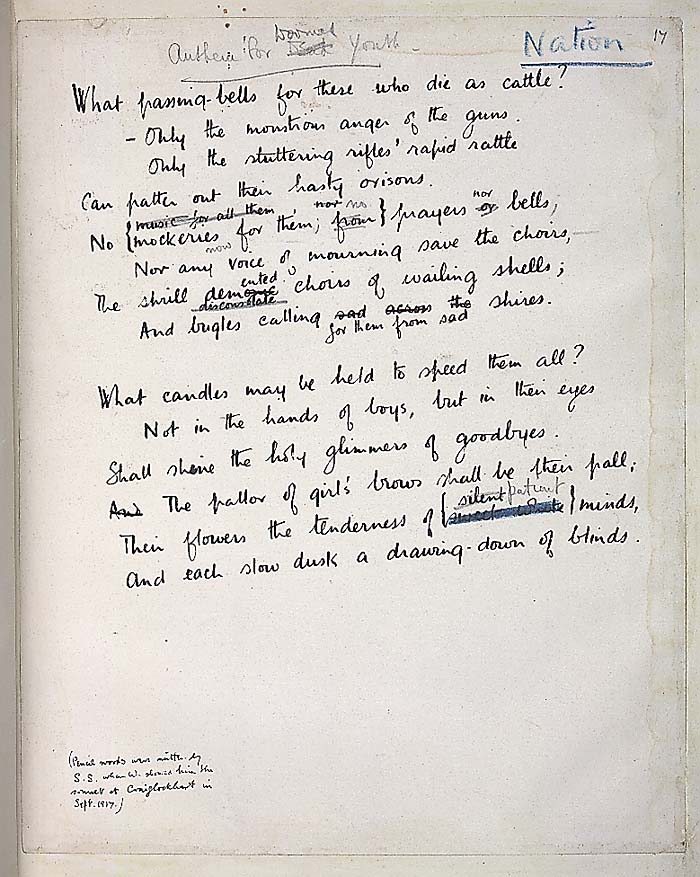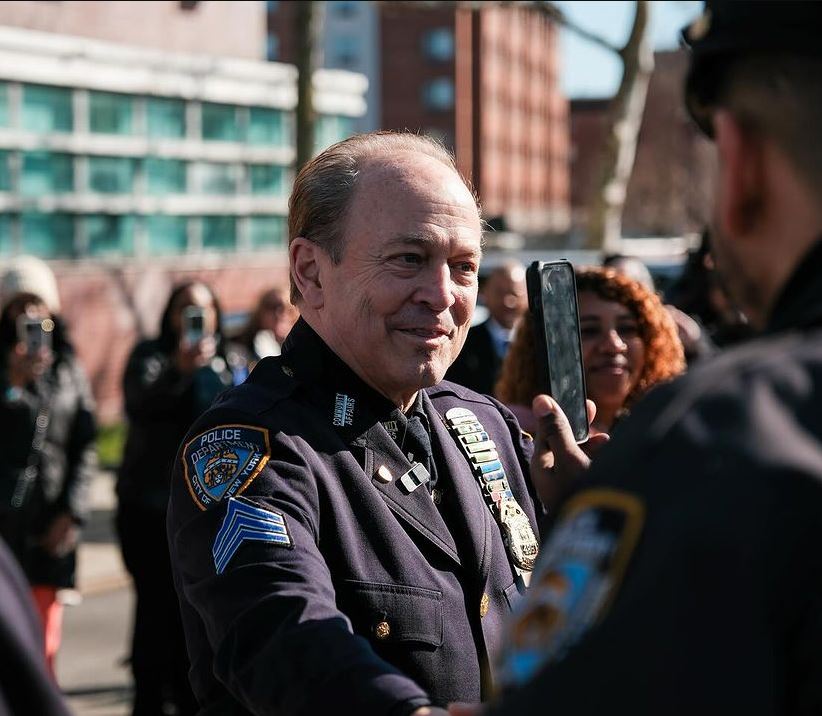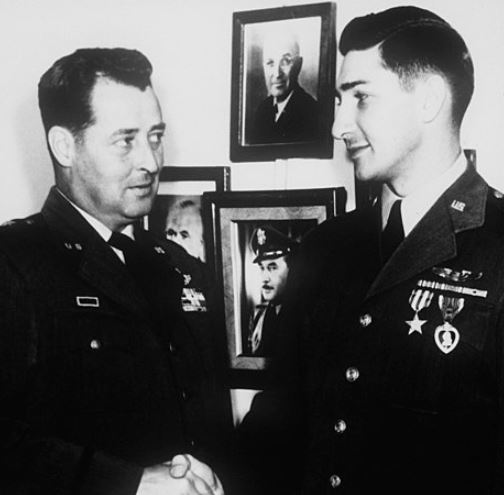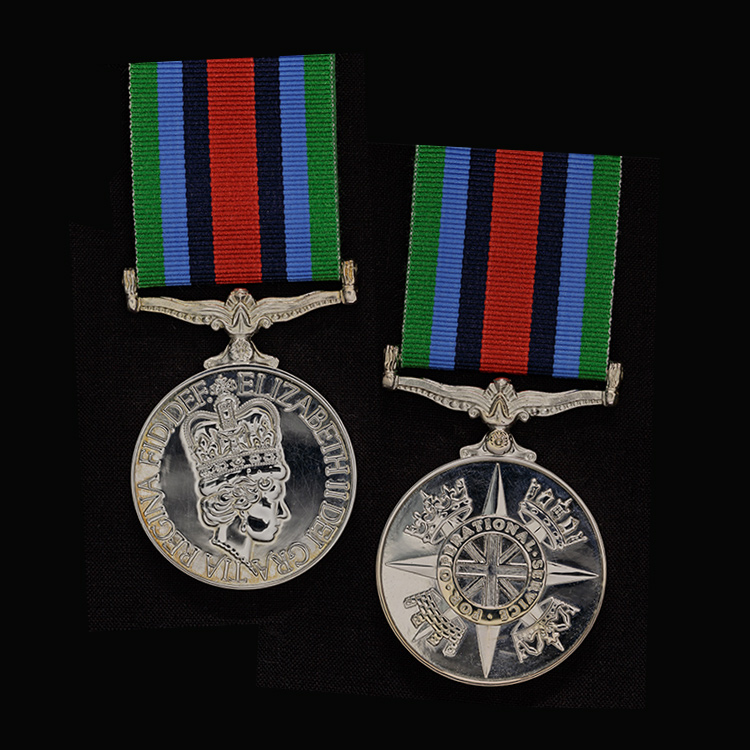Animals have always been a crucial part of the war effort, as humans have enlisted them to help fight their wars since prehistoric times. Horses, elephants and camels have in the past hauled men and supplies; pigeons carried messages and done photographic espionage. Even rats and pigs have been used in warfare and other combat related activities. But did you know that some of them received medals?
Sergeant Stubby
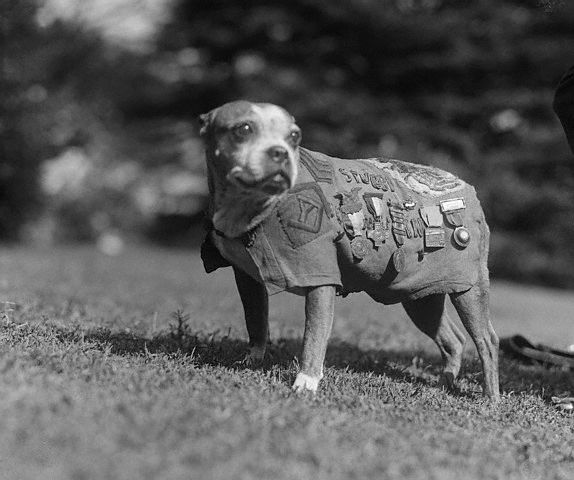
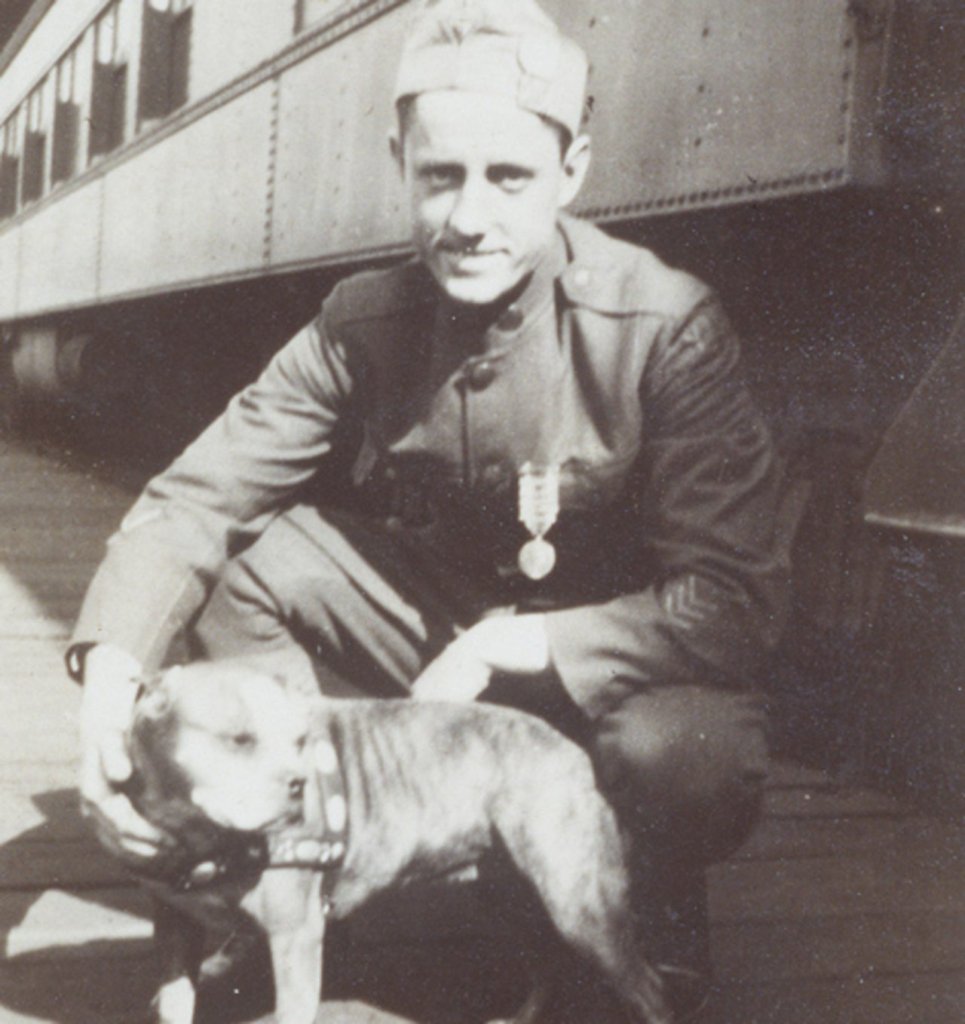
Born in 1916, Sargent Stubby served for 18 months and participated in seventeen battles on the Western Front. During World War I, this dog was the official mascot of the 102nd Infantry Regiment and was assigned to the 26th (Yankee) Division. He was so popular that his actions were well-documented in contemporary American newspapers.
Stubby was a dog of “uncertain breed“, most likely a Bull Terrier or Boston Terrier. Ann Bausum wrote that “The brindle-patterned pup probably owed at least some of his parentage to the evolving family of Boston Terriers, a breed so new that even its name was in flux: Boston Round Heads, American Bull Terriers, and Boston Bull Terriers.”
Stubby’s story is unique. As members of the 102nd Infantry were training in the Yale University campus in New Haven, Connecticut in July 1917, Stubby was found wandering the grounds and one soldier, Corporal Robert Conroy, developed a fondness for him. Conroy got so attached that he hid Stubby on board the troop ship, who remained undetected under his overcoat until they got off the ship in France. Luckily for everyone who was to come into contact with him n the future, the commanding officer allowed the dog to stay on board.
Stubby entered combat on February 5, 1918, at Chemin des Dames, north of Soissons in France. Serving with the 102nd Infantry Regiment in the trenches, Stubby participated in four offensives and 17 battles. He was wounded in the foreleg by the retreating Germans throwing hand grenades during a raid to take Seicheprey in April 1918, and sent to the rear for convalescence.
He was also injured by mustard gas, but after he recovered he returned with a specially designed gas mask to protect him. He soon learned to warn his unit of poison gas attacks and became very adept at letting his unit know when to duck for cover, as he could hear the whine of incoming artillery shells before humans. Stubby also helped locate wounded soldiers in no man’s land and was solely responsible for capturing a German spy in the Argonne, reason he was nominated for the rank of sergeant.
After Château-Thierry was retaken by the US, the women of the town made Stubby a chamois coat on which were pinned his many medals.
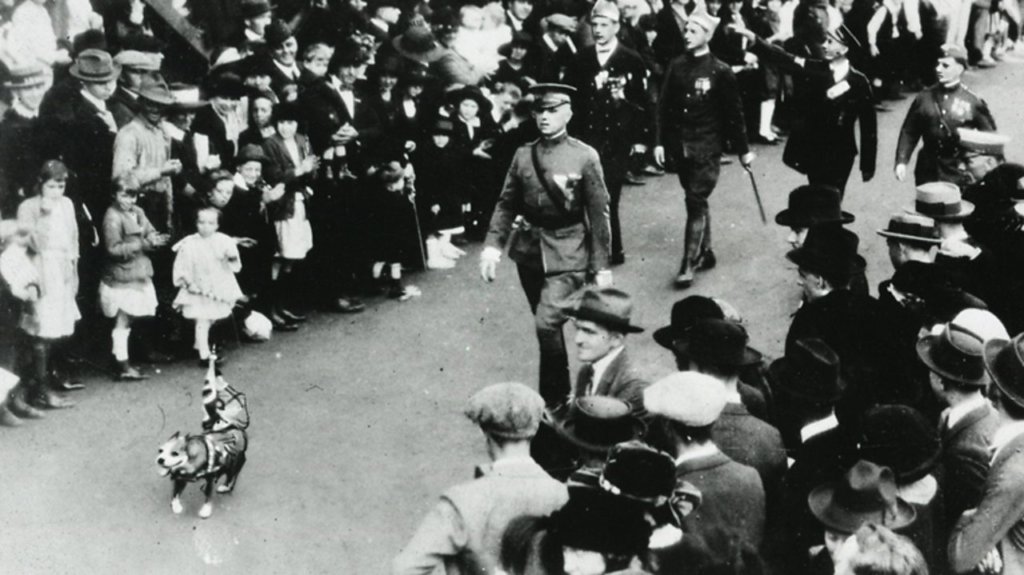
At the end of the war, Robert Conroy smuggled Stubby home where he became a celebrity and marched in, and normally led, many parades across the country. He even met Presidents Woodrow Wilson, Calvin Coolidge, and Warren G. Harding, was presented a gold medal from the Humane Education Society, attended Georgetown University Law Center with Conroy and became the Georgetown Hoyas‘ team mascot.
Stubby died in his sleep in 1926. His skin was mounted on a plaster cast and presented to the Smithsonian in 1956. Stubby’s obituary in the New York Times was half a page, much longer than those of many notable people of the time. The descendants of Robert Conroy (Stubby’s inseparable companion) dedicated a life-size bronze statue of Stubby named “Stubby Salutes”, by Susan Bahary, in the Connecticut Trees of Honor Memorial at Veteran’s Memorial Park in Middletown, Connecticut in May 2018.
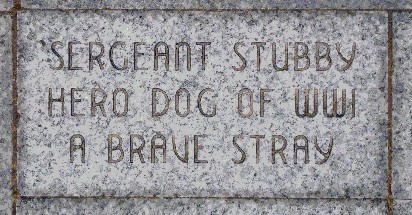
Sergeant Reckless
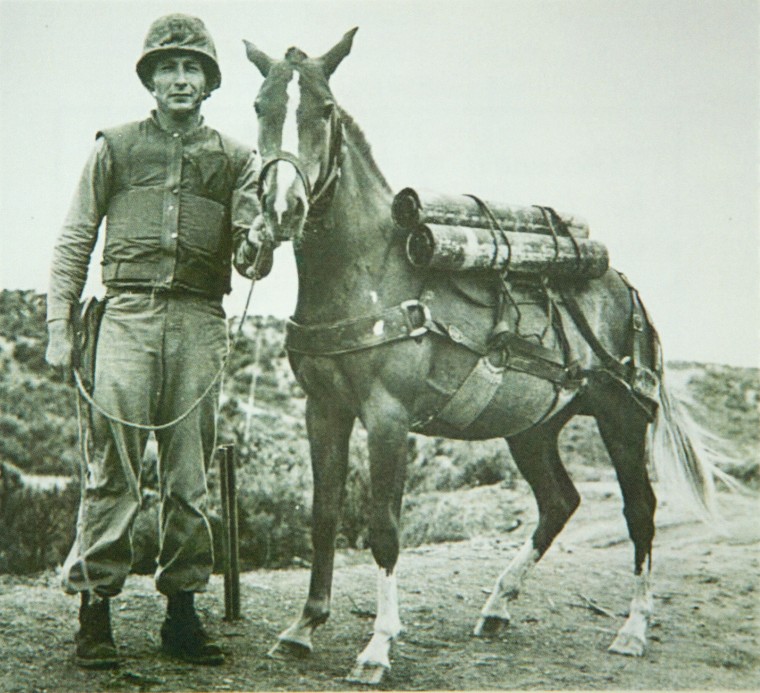
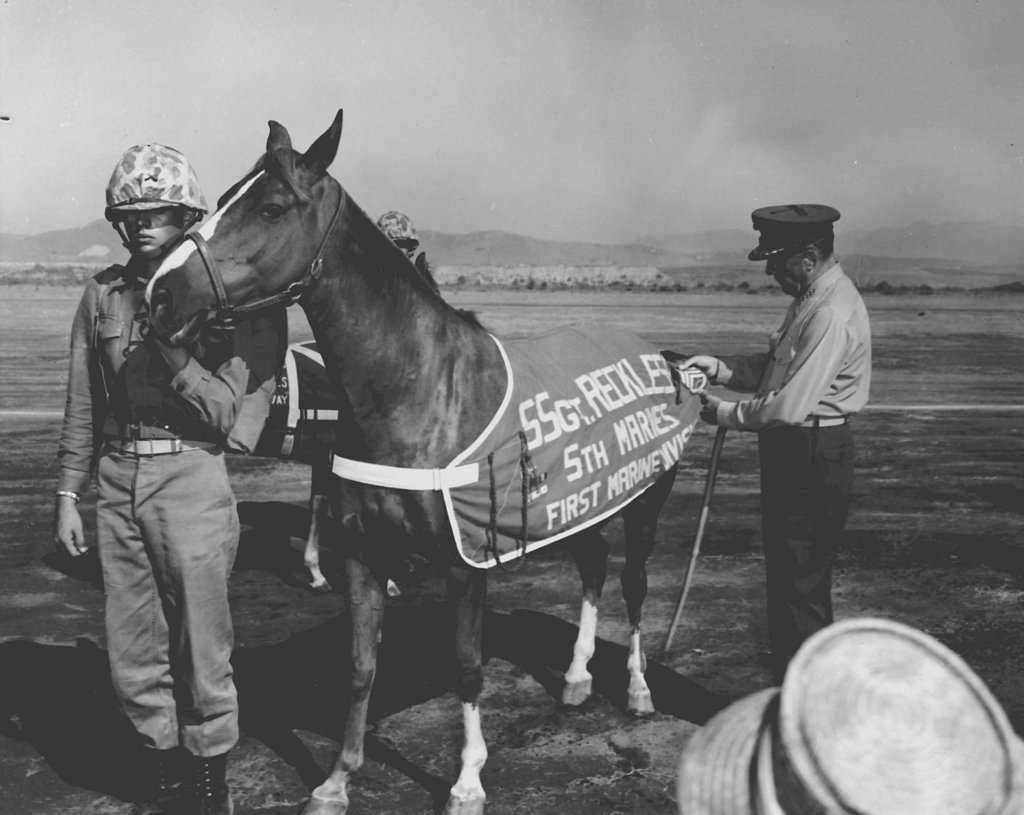
Reckless was a mare of Mongolian horse breeding, chestnut colored with a blaze and three white stockings, born in 1948 and purchased by members of the United States Marine Corps in October 1952 out of a race horse dam at the Seoul racetrack. She was originally named “Ah Chim Hai”, which translates to “Morning Flame“. She was small, standing only 56 inches (142 cm) and weighing 900 pounds (410 kg).
In October 1952, Lieutenant Eric Pedersen had received permission to purchase a horse for his platoon, a pack animal capable of carrying up to nine of the heavy 24-pound shells needed to supply the recoilless rifles used by his unit. Pedersen had his wife ship a pack saddle from their home in California so Reckless could better fulfill her primary role as a pack animal.
She was trained to be a pack horse for the Recoilless Rifle Platoon, Anti-Tank Company, 5th Marine Regiment, 1st Marine Division and was known for her willingness to eat nearly anything including scrambled eggs, beer, Coca-Cola and, once, about $30 worth of poker chips.
She quickly became part of the unit and was allowed to roam freely through camp. She served in numerous combat actions during the Korean War, carrying supplies and ammunition. She often traveled to deliver supplies to the troops on her own, without benefit of a handler as she could learn each supply route after only a couple of trips. In a single day in late March 1953, during the Battle for Outpost Vegas, she made 51 solo trips to resupply multiple front line units.
The Marines, especially Platoon Gunnery Sergeant Joseph Latham, taught Reckless battlefield survival skills such as how not to become entangled in barbed wire and to lie down when under fire. She also learned to run for a bunker upon hearing the cry, “incoming!”.
When not on the front lines, Reckless was particularly useful for stringing telephone wire. Carrying reels of wire on her pack that were played out as she walked, she could string as much wire as twelve men on foot. She became the first horse in the Marine Corps known to have participated in an amphibious landing when the 5th moved from Camp Casey to Inchon.
Reckless was wounded in combat twice, given the battlefield rank of corporal in 1953. Randolph M. Pate, then the commander of the 1st Marine Division, gave Reckless a battlefield promotion from corporal to sergeant in a formal ceremony, complete with reviewing stand, on April 10, 1954, several months after the war ended. Following the war was awarded two Purple Hearts, a Marine Corps Good Conduct Medal and a red and gold blanket with insignia as well as other military honors.
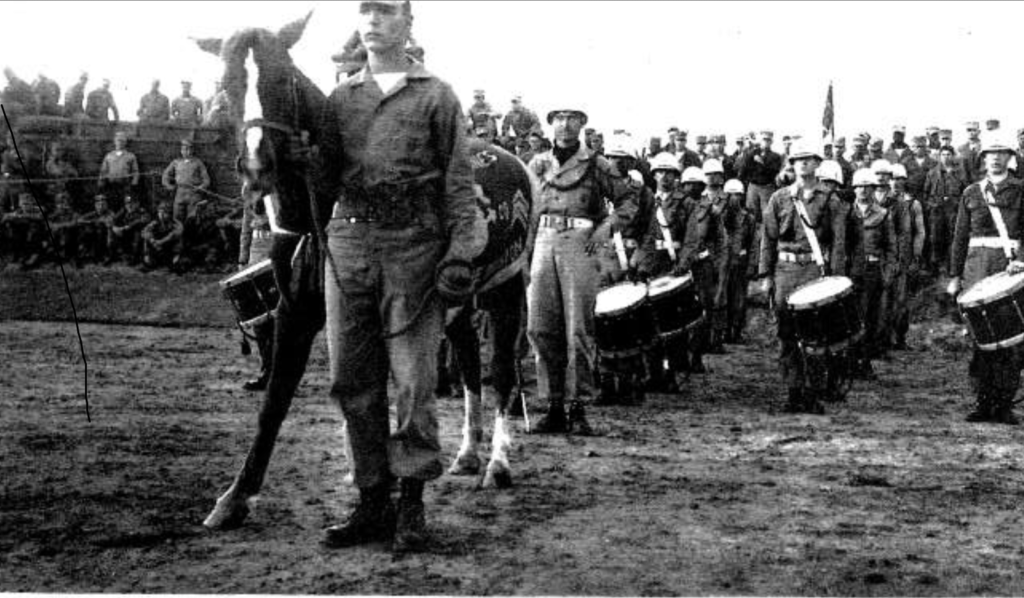
I was surprised at her beauty and intelligence, and believe it or not, her esprit de corps. Like any other Marine, she was enjoying a bottle of beer with her comrades. She was constantly the center of attraction and was fully aware of her importance. If she failed to receive the attention she felt her due, she would deliberately walk into a group of Marines and, in effect, enter the conversation. It was obvious the Marines loved her.—Lieutenant General Randolph McC. Pate
Prior to her departure for America, a ceremony was held during half time of a football game between the Marine Corps and Army. Reckless left Korea for Japan aboard a 1st Marine Aircraft Wing transport plane and then sailed from Yokohama on October 22 aboard the SS Pacific Transport, due in San Francisco on November 5, 1954. Reckless was kept by Pedersen’s family for a brief time before moving to a more permanent home with the 5th Marines, 1st Marine Division at Camp Pendleton. She was well cared for and treated as a VIP during her time at Camp Pendleton. The Marine Corps was also careful not to allow her to be exploited by commercial interests.
Reckless developed arthritis in her back as she aged and injured herself on May 13, 1968, by falling into a barbed wire fence. She died under sedation while her wounds were being treated. In 1997, Reckless was listed by LIFE magazine as one of America’s 100 all-time heroes.

